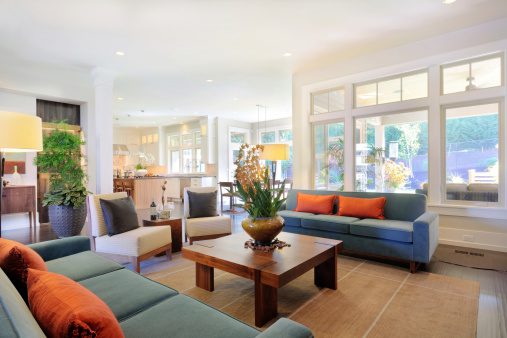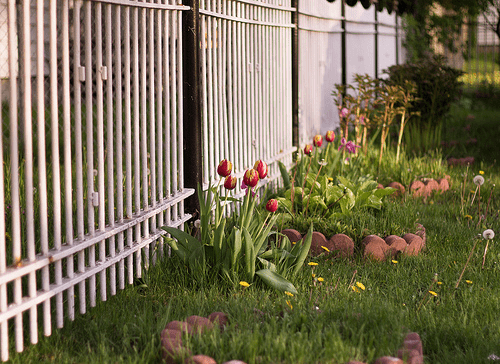Choosing the Right Plants for Every Room in Your Home
Many people choose houseplants because they think they are attractive, rather than considering where the plant will be located. Different rooms in your house have different climates based on their location, which results in a variety of temperature, humidity, and lighting levels. These factors should be considered before purchasing any plants and before you decide where to set a plant in your home.
Lighting
Light is essential to plant growth and can effect how well a plant thrives. Plants who do not receive enough light can turn brown and grow poorly. The direction the windows are facing will affect how much light that the plant receives unless you plan to supplement the plants with artificial lights. Rooms with south-facing windows receive lots of sun. These rooms can support plants that need bright light and even direct sunlight. Jade plant, ponytail palm, schefflera, geraniums, begonias, chrysanthemums, and cyclamens all have higher light requirements.
Rooms with west-facing windows produce stronger afternoon sunlight than east-facing windows, but less sunlight than southern-facing rooms. Plants will need moderate light requirements to do well in these rooms. Boston fern, Moses-in-the-cradle, philodendron, spider plant, and most types of ivy require moderate light.
Rooms with north-facing windows receive very little sun and almost no direct sunlight. Plants need to have moderate to low light requirements to do well in these rooms. Areca palm, Chinese evergreen, maidenhair fern, and heartleaf philodendron are four plants that thrive in low light. For those of you who live in the city, you must also consider any neighboring buildings that might further shade your windows.
Humidity
Humidity levels in your house can vary depending on their location. Rooms near the kitchen, laundry room, and bathroom will have a higher humidity level. In addition, warmer rooms are usually more humid than cooler ones. Luckily, humidity levels are one of the easier things to alter in a room. Most houseplants need a humidity level that is between forty to seventy percent. Plants that are losing leaves or turning yellow are not getting enough humidity. No amount of watering will help a plant endure low humidity.
However, there are several ways you can raise a room’s humidity.
• Place several plants next to each other. Humidity is increased by placing more plants in a room and by moving the plants closer together.
• Set the pot on a bed of small pebbles filled with water. Use a two-inch high tray filled with about one-inch of gravel. Fill the tray with water until the water is just below the gravel, and set the plant on top of it.
• Mist the plants in the morning using room temperature water. This will work for most plants, except ones with fuzzy leaves. Be careful not to mist the plant too often or it might rot.
• Double pot the plant by placing its pot inside a larger pot (or basket) and filling the space between the two pots with moist peat moss.
• Use a humidifier.
If none of these methods seems to work, consider purchasing cacti, succulents, or other plants native to the desert environments that tolerate lower humidity.
Temperature
Even if there is only one thermostat in your house, room temperature can vary as much as ten degrees or more. Location of vents, lighting, drafts, and amount of use can all affect a room’s temperature. Placing a plant that likes warmer temperatures in a cool room is as bad as placing a plant that likes cooler temperatures in a warm room. Every plant has an optimum temperature, which is the temperature at which a plant grows and develops the best. When temperatures vary too much from this optimum level–in either direction–the plant fails to thrive. Plants that are kept at temperatures that are too cold for it will have limp yellow leaves that may fall off. Other symptoms are blasting flower buds and new leaves that are smaller and slightly curled.
You will also need to keep in mind the plants location in the room. Few plants will survive when they are located near radiators or hot air vents because it causes their leaves to dry out. Similarly, plants located near windows in the winter can suffer when the sun goes down and the glass cools. Heat will radiate from the leaves toward the glass, causing the leaves to chill. Protect the plants by pulling down the curtains or placing a layer of paper between the plants and the window.
Caladium, calathea, golden pothos, Chinese evergreen, and most palms are high temperature plants, which grow best at 70oF to 80oF during the day and 65oF to 70oF at night. There is also a wide variety of flowering plants available as well such as African violets and impatiens. Hoyas, chrysanthemum, jade plant, tree ivy, and burro’s tail are cool temperature plants, which grow best at 50oF to 60oF during the day and at 45oF to 55oF at night. If you are looking for a flowering plant that will bloom at lower temperatures, try oxalis, freesia, jasmine, camellias, and florists’ azaleas.
By understanding the conditions of a room, you can better decide which houseplants will do better there. Plants that are thriving are easier to care for and more resilient to pests and diseases. Not to mention that they are much more enjoyable than plants that are wilting or dying.


